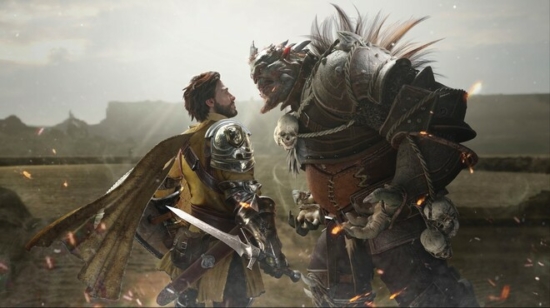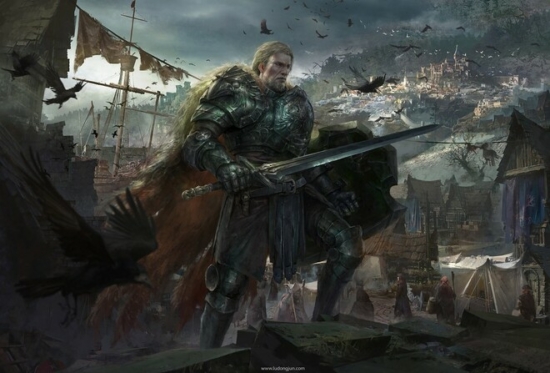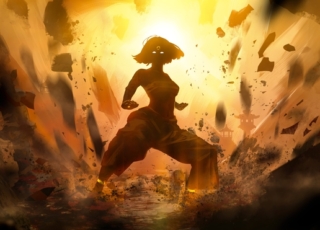REPORT: Attractiveness of Video Game Heroes and Heroines, Pt. 2
- June 17, 2020
- Michał Dębek
- Gender Perception and Stereotypes in Video Game Characters
- Psychophysiological Responses to Game Heroes and Heroines
- Gender Differences in Character Engagement
- Eye Tracking and Visual Attention
- What Appeals to Young Adults in Men and Women
- Real-Life vs. Virtual Ideals
- Key Traits of Attractive Heroes and Heroines
- Summary
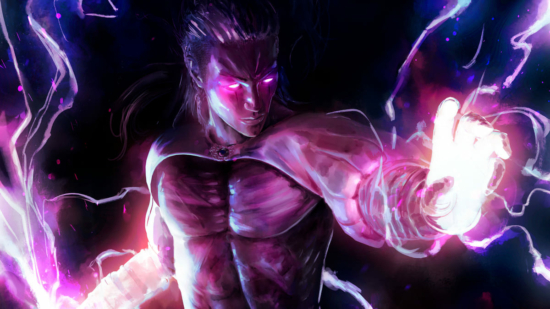
In the first part of our report on the attractiveness of video game heroes and heroines, we explored the concepts of beauty and heroism, along with an attractiveness ranking of popular game characters. In this section, we’ll investigate how game characters engage players. We’ll also look at how the appeal of male and female video game characters compares to real-world preferences. Finally, we’ll highlight the key physical traits and personality features that make a video game hero or heroine stand out.
Gender Perception and Stereotypes in Video Game Characters
Gender is the cultural, social, and psychological aspect of being male or female. It involves a set of behaviors and characteristics traditionally associated with men or women at a given point in time. Research indicates that people perceive most occupations commonly as masculine, particularly those with the element of power or product-oriented roles. In contrast, people think of caregiving roles as feminine. Similarly, in modern Polish society, people associate certain professions with particular gender. Driver, programmer, or engineer are often considered more suitable for men. Roles such as interior designer, pharmacist, or nurse are seen as “typically” female.
Cultural norms play a huge role in shaping how we learn which are the traits of a “real man” or a “real woman.”
Therefore, Western culture often fails to view a gentle, helpful, or empathetic man as traditionally “manly.” Similarly, people don’t automatically perceive a female character as feminine solely because of her biological sex.
This way of thinking also applies to video game characters. Their perceived masculinity or femininity often depends on their traits and behaviors rather than their sex. For example, Joel from The Last of Us (Naughty Dog) is seen as a father figure. Meanwhile Aloy from the Horizon series (Guerilla Games) is a fearless warrior. Both of these characters challenge traditional gender expectations.
To explore how players see the masculinity and femininity of video game characters, we created a psychological gender index. This index looks at the roles characters play in cultural, biological, and social contexts. We used Bianca Grohmann’s method for measuring masculinity and femininity and placed each character on a scale. This measures range from very masculine to very feminine, with gender neutrality in the middle. This helped us understand how players categorize heroes and heroines based on their perceived gender traits.
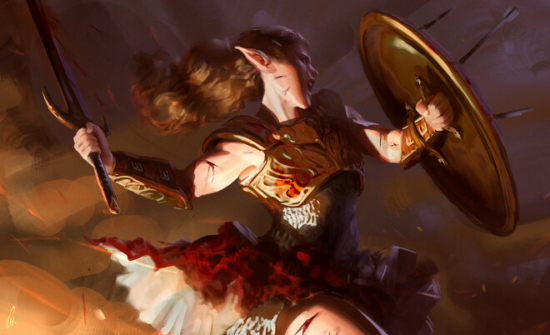
Heroes
Perceived as Most Masculine
- Geralt of Rivia (The Witcher 3: Wild Hunt, CD Project Red),
- Ezio Auditore (Assassin’s Creed II, Ubisoft Montréal).
Perceived as Most Feminine
- Lucian (League of Legends, Riot Games),
- Joel (The Last of Us).
Heroines
Perceived as Most Feminine
- Kokoro (Dead or Alive series, Team Ninja),
- Lara Croft (Tomb Raider series, Crystal Dynamics).
Like the male heroes, both characters also secured a spot in the top three of the attractiveness ranking.
Perceived as Most Masculine
- Juri Han (Street Fighter series, Capcom),
- Christie Monteiro (Tekken series, Bandai Namco Entertainment).
To explore the topic of heroes and heroines further, we conducted a psychophysiological study (read more about these methods here). We wanted to see how players’ psychophysiological responses relate to their declarative data—or if there’s any connection at all. We measured their electrodermal activity (EDA), also known as galvanic skin response (GSR), their heart rate, and used eye tracking. All to determine what reactions certain video game characters elicit in the players.
Arousing Heroes: Geralt
Geralt turned out to be the male hero who triggered the highest arousal levels among players.
Both men and women showed clear changes in electrodermal activity when reacting to the Witcher. The strongest responses occurred during close-ups of Geralt’s face, where players’ attention was drawn to the veins on his neck. Other responses occurred during his movements in an intense combat scene. Psychologically, this response could be explained by the emotional intensity of the situation.
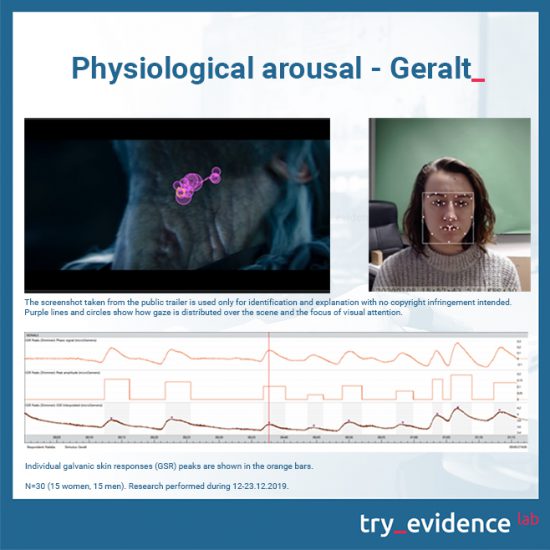
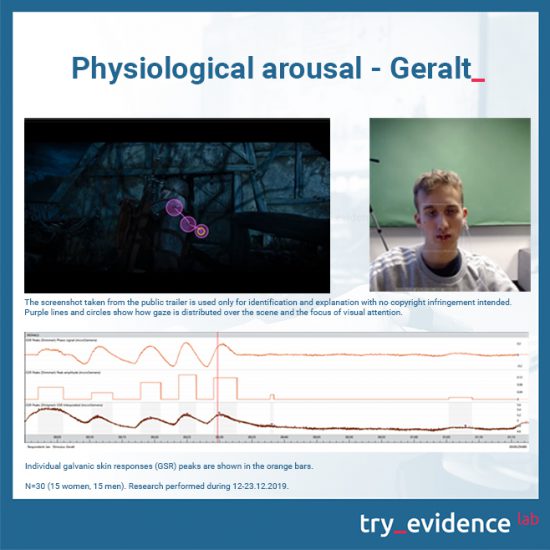
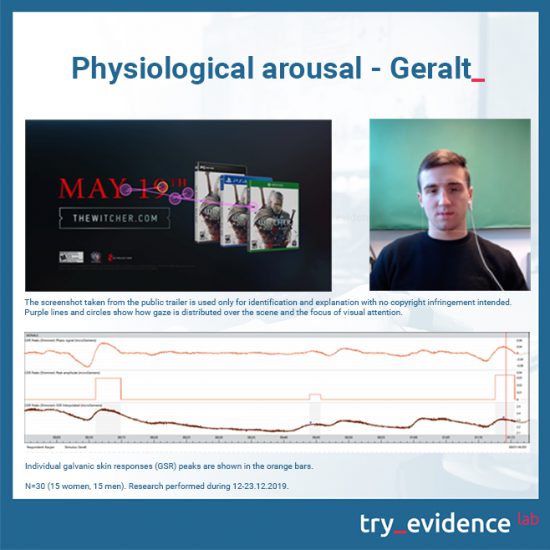
Non-Arousing Heroes: Joel and Agent 47
Joel from The Last of Us turned out to be the least stimulating hero. However, the trailer still had moments that strongly engaged the respondents. Participants rated Joel as the least masculine in gender classification, and in the trailer, he acted as a protector and defender. This placed him in a more stereotypically feminine role, which might have led participants to view him as a more feminine hero.

Arousing Heroines: Kokoro and Juri
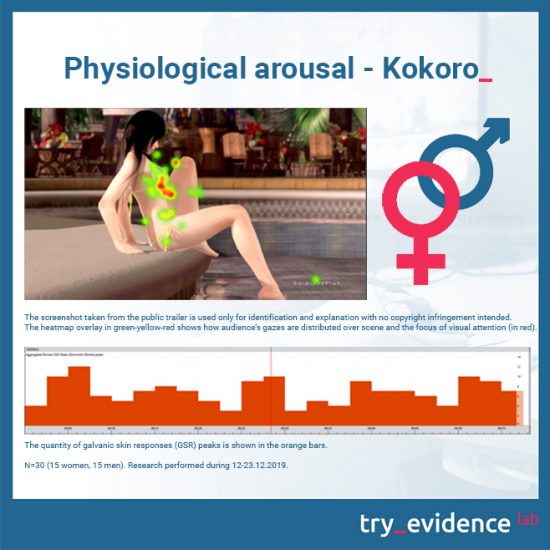
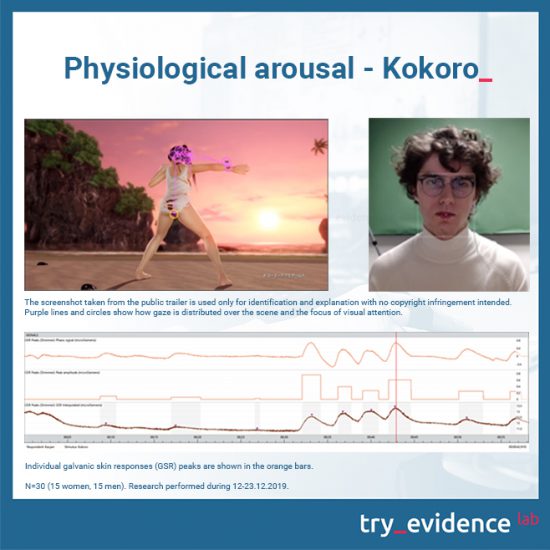

When it comes to Juri, the participants were particularly stimulated by close-ups of her bust, the fight scenes, the moment just before the knockout, and the final close-up of the heroine.
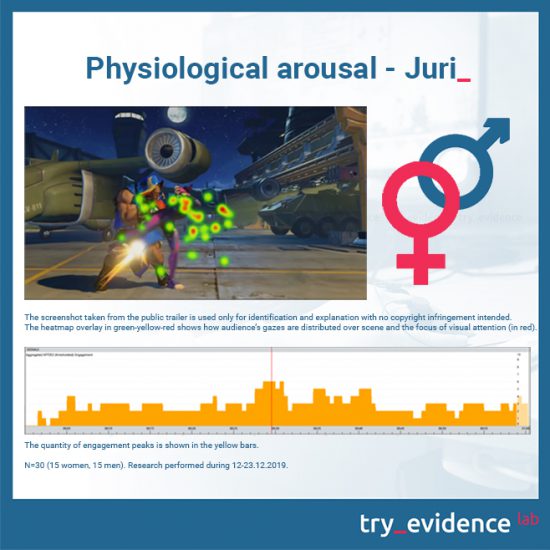


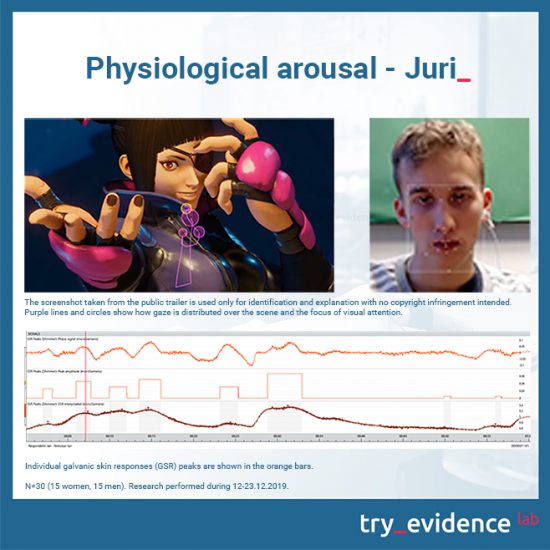
Non-Arousing Heroines: Lara Croft, Christie and Faith
Lara Croft elicited the least stimulation from the male participants, while women were least aroused by Christie. Faith Connors was another character who failed to generate much engagement from either sex. Her trailer was the least stimulating of all the heroes and heroines featured.
Gender Differences in Character Engagement
Engagement with Male Characters
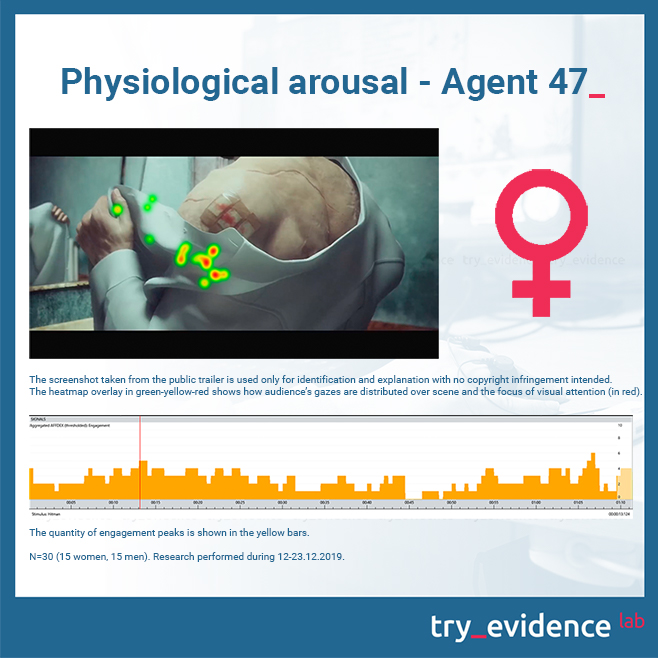
Although Lucian clearly stimulated both men and women, their levels of engagement differed.
The romantic scene with his beloved elicited both arousal and engagement in women. However, men, while also aroused by the scene, didn’t show external signs of engagement—”poker faces” prevailed.
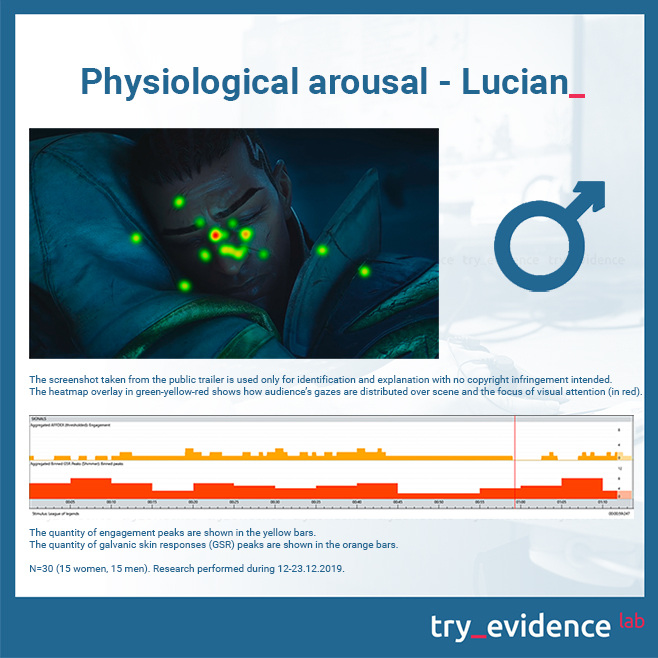
Engagement with Female Characters
Kokoro engaged women the most, while men showed the greatest engagement when watching Juri. However, regardless of which heroine appeared on screen, men’s engagement was consistently less pronounced than women’s.
Men’s engagement remained high during the fighting scenes but declined afterward.
Lara Croft was the least engaging for men, while women were least engaged by Mila (Dead or Alive series, Team Ninja). Faith Connors was another character who failed to engage players—her trailer was the least stimulating and least engaging of all the heroes and heroines featured.
Eye Tracking and Visual Attention
Eye tracking revealed that women frequently and for long periods fixated on the abdomens of heroines.
There are several possible explanations for this behavior. From an evolutionary psychology perspective, certain body regions, particularly those associated with reproductive health and fertility, naturally attract attention. Research suggests that both men and women tend to focus on areas of the body that signal reproductive fitness. The abdomen is one such area that draws attention, as it usually is as an indicator of attractiveness and reproductive capability.
Another possible explanation is social comparison or self-evaluation. Women may fixate on heroines’ abdomens as they evaluate their own bodies in relation to societal beauty standards, which often emphasize specific body shapes and sizes. This ideals may influence such a focus, leading to a heightened attention to certain body areas.
Alternatively, it could simply reflect a desire for pleasant, aesthetic experiences. The emotional and psychological significance of body image might drive attention towards features that align with personal or cultural ideals of beauty.
This tendency was most noticeable when women watched characters like Lara Croft and Christie Monteiro, though a similar pattern, albeit less pronounced, was observed when viewing other heroines.
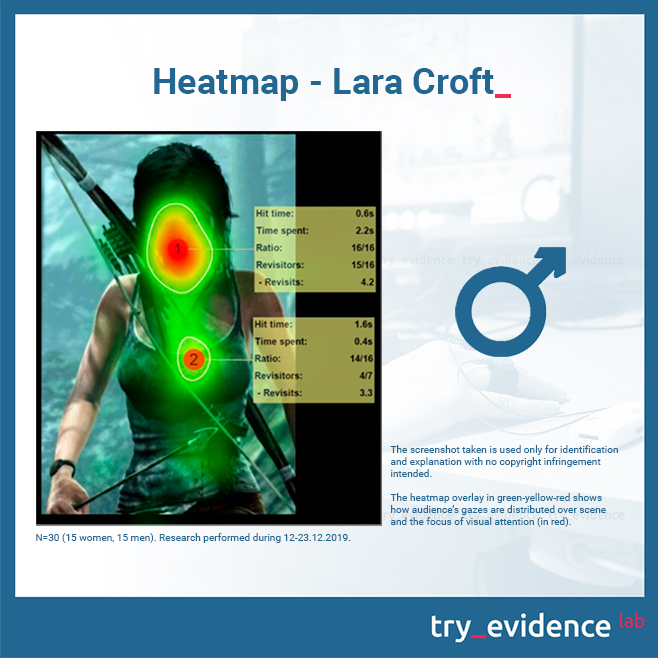
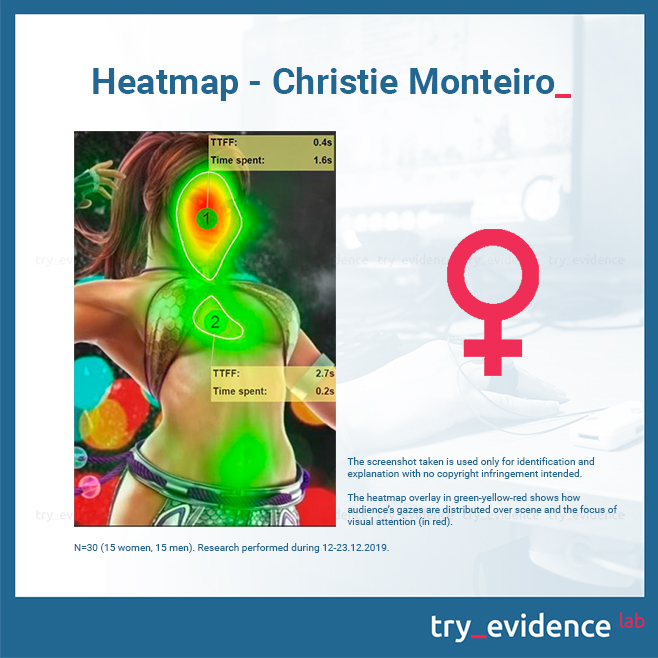
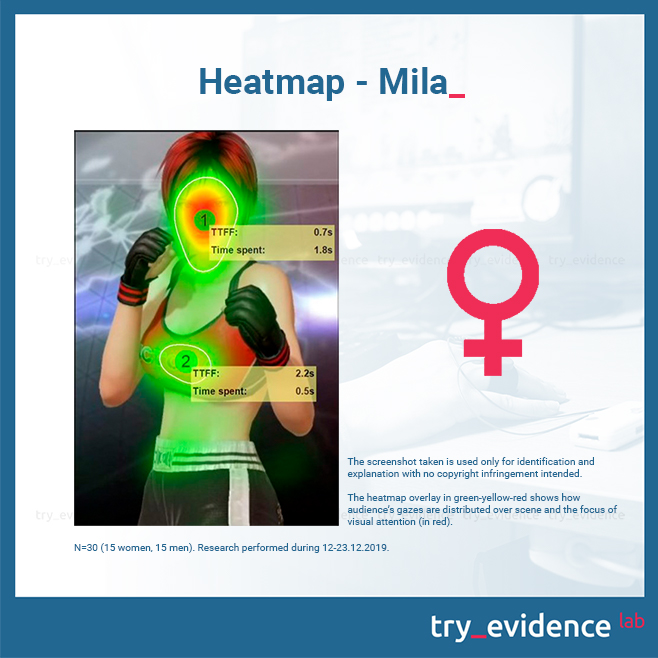
What Appeals to Young Adults in Men and Women
We explored the qualities of men and women that players appreciate both in real life and in video games through interviews with our respondents. We asked them about their preferences regarding the appearance and behavior of real women and men, what features they find attractive, and whether those preferences align with the characters they adore in games.
Women’s Appeal
Both men and women agreed that they most often focus on a woman’s face. For men, the way a woman speaks, the content of her words, and the overall experience of interacting with her were equally significant. Women, however, placed greater emphasis on warmth and kindness in a woman’s speech, appreciating a tone that avoids profanity.
Our research suggests that participants view the “ideal woman” as athletic, slim, and tall (around 1.70 m), with long hair and large eyes. These preferences align with findings from David Buss’s Evolution of Desire, which highlights evolutionary factors influencing perceptions of attractiveness. Additionally, women respondents valued other women’s attention to appearance and stylish clothing. Men, on the other hand, emphasized physical traits such as delicate facial features, shapely buttocks, and vibrant eye colors—blue and green in particular.
Both genders considered femininity an attractive quality but interpreted it differently.
Women associated femininity with a blend of delicacy, strength, and confidence, alongside politeness in speech. Men, meanwhile, appreciated femininity expressed through care, sensitivity, and modesty.
Men also valued intelligence in women, particularly when demonstrated through engaging conversations, a sense of humor, broad knowledge, and an openness to new experiences.
Men’s Appeal
Real-Life vs. Virtual Ideals
Ideal Men: Real Life vs. Video Games
Key Traits of Attractive Heroes and Heroines
When asked about the qualities of attractive heroes and heroines, our respondents highlighted both physical traits and personality characteristics.
Key Qualities of a Heroine
An attractive female character in a video game, according to the participants, is typically around 20 years old with a well-proportioned figure and a strong sense of confidence. She seems to be a combination of youth, physical appeal, and self-assuredness.
However, there was a notable difference between men and women regarding the character’s outfit.
While men preferred the heroine to wear a tight, form-fitting outfit, women favored a more modest, body-covering attire for the character.
For women, the preference for modest clothing may reflect a desire for representations that align with their values and experiences, focusing on empowerment rather than objectification.
Meanwhile, men’s preference for tighter outfits can likely be traced to sociocultural influences that emphasize physical attractiveness and sexual appeal.
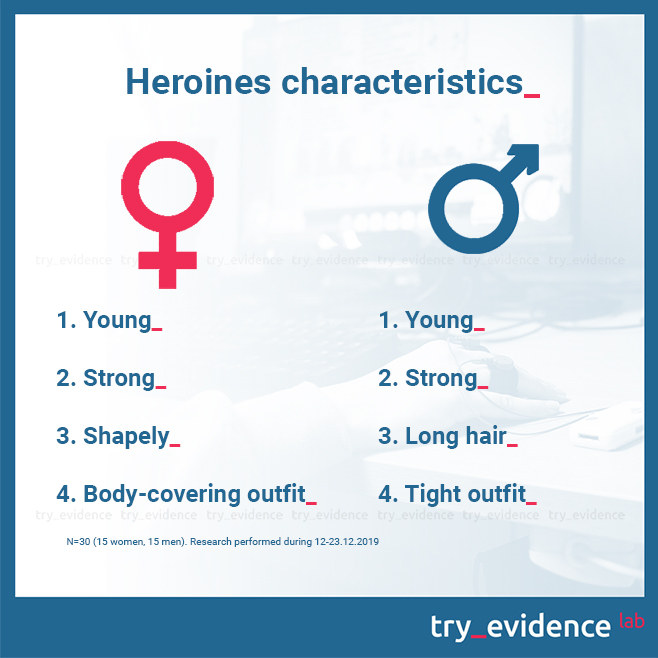
Key Qualities of a Hero
In contrast, participants typically portayed the ideal male hero as confident, muscular, and around 40 years old. Both men and women agree that this hero should possess experience and a strong, well-built physique.
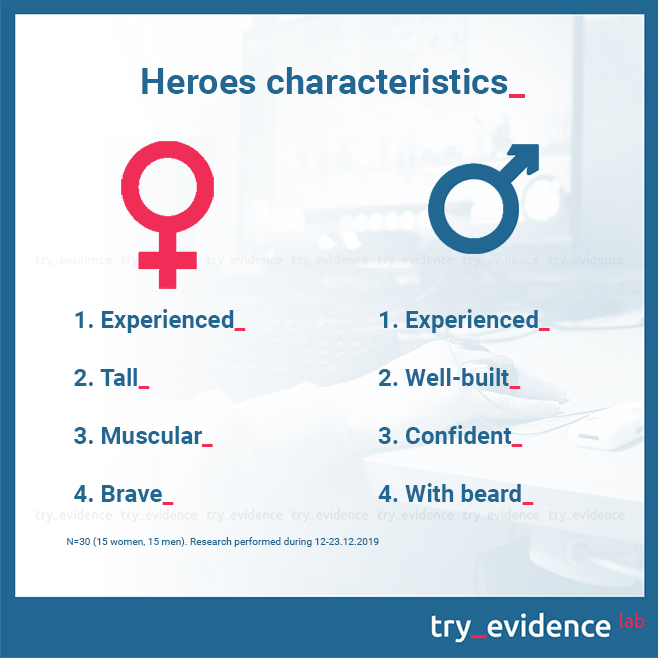
Summary
The Witcher strikes again! Our study shows that Geralt isn’t just the most attractive, but also the most stimulating, engaging, and masculine. It seems our complex research method has confirmed what we already knew–Geralt of Rivia is a well-crafted character in every way. It appears that players are most aroused by stereotypical male warriors. Joel from The Last of Us, despite being an interesting character, generated the least excitement among participants. For video game heroes, masculinity clearly takes the lead.
The female world, however, is more complex. Both the delicate Kokoro (a stereotypically feminine character) and the aggressive Juri (a more masculine figure) were equally stimulating for the players in the study.
Interestingly–and probably not a surprise to some of our readers–engagement and excitement don’t always go hand in hand with video game heroes and heroines. When it comes to playing or watching video game content, facial expressions and physiological reactions don’t always align with what respondents openly declare. People aren’t always willing to fully express their preferences regarding attractiveness. This is why it’s essential to use multiple methods, or the “triangulation technique,” to get a full picture of the phenomena we’re studying. In our research, this means combining interviews, surveys, and real-time psychophysical measurements.
Our findings about heroes and heroines show that the standards are high both in video games and in real life.
These characters must meet exaggerated expectations for both personality and appearance. In fact, the traits that make up the perfect video game hero or heroine reflect deeply ingrained ideas about femininity, masculinity, and heroism. What’s even more interesting, the expectations for real-world men appear to be even higher than those for their virtual counterparts. While it’s challenging for any character to meet all of these criteria, as we’ve seen, some “monster hunters” come remarkably close.


